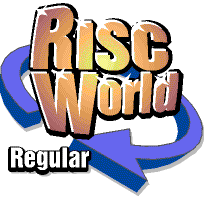



Research your family history online
Dave Bradforth goes on-line looking for more Bradforths...
Before you begin to produce your family tree, you'll need to research your family history, as I explain in this, the first of a new series on genealogy, it's easier than you think.
As illustrated by the recent launch of various magazines on the subject, researching your family history (and producing your family tree) on a home computer is a subject of interest to many. With the expansion of the Internet, many resources that would previously have taken months to acquire are available in seconds, and with the software now available it's never been easier to store family data in an appropriate format.
There are three stages to producing a family tree on your computer. The first, research, is discussed in this article, where we've given four essential websites that offer a clear methodical layout and should be quite easy to navigate in finding any family information.
The second, organise, forms the subject of our next article. The organisation process is where you enter the data you've collected into your computer, linking it to individuals and families in the process. It can take some time, but will ultimately make your family tree that little bit better.
The final stage, presentation, will be discussed in our final article. This covers the factors behind making your family tree look good on paper, from getting more out of your paper size to the advantages offered by using a computer over the more traditional calligraphy pen and ink.
What is GEDCOM?
GEDCOM, standing for Genealogical Data Communications, is the International file standard used behind most genealogical applications. There are numerous versions and variations of it, which unfortunately means that many applications are compatible in many ways but not entirely.
The standard defines how data is stored within a database, and the factors beyond which affect it. From how families are linked together, to any further resources available, virtually anything can be stored within a GEDCOM file. A technical description of the format is available at www.gedx.com.
Websites that will help you trace your relatives
There are literally thousands of websites dedicated to genealogy; and below we've covered just four more general sites as a starting point to your own genealogical research. Over the course of the next two issues, we're looking for input as to your own favourites for inclusion. Do please email me, and if appropriate, I'll include a roundup in the next issue.
Ask Jeeves to trace your relatives
If you Ask Jeeves a question about your name, it will search the Internet for an answer. If it doesn't have an answer, it will often return a suggested alternate search that may or may not be more successful. This is a more general search engine, offering something beyond genealogy.
Could Friends Reunited be Families Reunited?
The world-famous Friends Reunited website, and its new relative GenesConnected, contain many thousands of records on individuals around the country. It's possible that there may be an entry from a long-lost family member; someone with whom you can combine work on your tree.
Cyndi knows all about genealogy
Cyndi's List is the Internet's single most comprehensive guide to family tree research while online. Administered by Cyndi Howells, the site contains quite literally thousands of direct links to Internet sites containing information about families and family names all over the world.
Become all google-eyed
Since its proper introduction as a mainstream internet portal (helped considerably by the acquisition of dejanews), Google has evolved to become something like a one-stop-shop for all information on various types. Here we've searched for photographs of an individual, returning just one entry. (Yes, it's very egocentric but searching for photographs of other people and including them in magazine articles can prove to be a little litigious if we forget to ask the people involved.
Software for genealogy under RISC OS
We're not going to explore this in detail until the next issue, but there are a number of options for looking after your family tree through RISC OS.
The first, and most obvious given that it's distributed by RISC World's publishers, APDL, is Ancestor+. Released as a development of Graham Crow's own Ancestry package, but renamed after Minerva Software decided that they own all rights to the word Ancestry when connected to a genealogy package, it has been favourably reviewed through most parts of the RISC OS press.
As I write David Holden is working on an update to the package, so we're optimistic it will be ready for a detailed review in the next issue. In the meantime, further details are available from APDL on 020 8778 2659 and a copy of the current trial version can be found on this issue of RISCWorld. Play with it, as next time we'll be using it with a vengeance.
Other options available include:
- !Family, originally written by Dennis Howe and currently available from http://www.pennine.demon.co.uk/family/downloads.html.
- Rosemary Miskin has written a number of essential utilities for checking the validity of GEDCOM files (which could be essential to save time when exporting the files to friends with PCs and Macs). Visit her website at http://www.argonet.co.uk/users/miskin for details.
- Another useful utility that's highlighted itself is GedcomWeb from Hilary Phillips. This will convert a GEDCOM file into two HTML files, one containing an index to all the names in your GEDCOM file in alphabetical order by surname and the other in an interactive layout of a type of family tree.
We'll be looking in detail at as much software as we can in the next issue, and everything that's freeware will be included as you'd expect on the disc. Do please let us know of anything we've missed, or indeed your preferred way of creating family trees within RISC OS.
Dave Bradforth